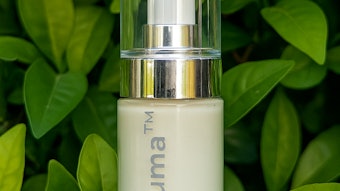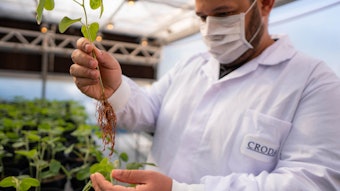At a recent Cosmetic Executive Women’s Newsmaker Forum, Neil Fiske, CEO of Bath & Body Works, said, “Holding on to the past is the only thing that will limit our growth.” In his speech and in his book Trading Up—New American Luxury, Fiske takes a broad look at how consumers spend money in pursuit of beauty and well-being, proposing that how one looks, feels and lives all contribute to a broader definition of beauty.
Wipes and related technologies appear to sit well within Fiske’s proposition. Disposable wipes are convenient, portable and hygienic—attributes that support the broader definition of beauty. In a recent issue of Cosmetics & Toiletries magazine, Robert Y. Lochhead of The Institute for Formulation Science at The University of Southern Mississippi, reported that emerging technologies continue to enhance the properties of wipes, augment deliverable attributes and increase market penetration. In fact, The Freedonia Group reports that the U.S. demand for wipes will grow 6% yearly through 2009 based on further market segmentation and new product introductions. The current value of wipes across segments in the U.S. is approximately $1.5 billion.
Personal care wipes have been ubiquitous in diaper-bag arsenals for years, and parents understood that the usefulness of wipes did not end once their children were out of diapers. Good hygiene also could be convenient—and convenience translates to products in most categories. Wipes, with the help of advances in technology and ingredients, increasingly are being designed for cosmetics and skin care.
“Nearly every cosmetic application can be offered,” said Wolfgang Siegert, technical service manager, Schülke & Mayr GmbH. “Deodorant wipes, sun protection wipes, skin tanning/skin whitening wipes, skin disinfection wipes, refreshing/cooling wipes are examples for new product types.”
According to Lochhead, deliverable product is usually contained within wipes as lotions that are solid at room temperature and depend on being melted by body heat during application. He forecasts advances in formulations and in the ability to make inexpensive nanofibrous materials that will enhance the capillary-driven uptake of formulas into the wipe itself.
Perhaps the most important advancements in wipe technology are those made in preservatives. Basically, ensuring that personal care and cosmetic formulas designed for use in wipes are viable end-use products.
Preservative Selection
Preservatives appropriate for traditionally packaged personal care and cosmetic products may not be equally suitable for preserving wipes, and preservatives for wipes face a number of challenges beyond the product formula.
“Several considerations in choosing effective preservatives for cosmetic and personal care products are common whether the product is a wipe or not,” said Susan Lindstrom, senior manager, R&D microbiology, International Specialty Products. “These qualities are broad-spectrum antimicrobial activity, stability over time, compatibility with the most commonly used raw ingredients, the product matrix itself and non-irritation to the consumer during use. However, the unique nature of cosmetic wipes will impact preservative selection.”
The liquids in wet wipes contain more water than most other cosmetic formulations, which limits the use of paraben-based preservatives. Therefore, a preservative with sufficient water solubility isessential.
“Water solubility of preservatives in wet wipe applications is very important in order to properly and uniformly disperse the preservative throughout all areas of the non-woven substrate,” said Steve Orofino, senior manager preservatives R&D, International Specialty Products. “Lower solubility preservatives tend to adsorb to the non-woven, and will not properly disperse throughout the system—leaving areas of low or unprotected non-woven, which can lead to the possible growth of microorganisms.”
“Wipes, by their nature, tend to be highly susceptible to the growth of mold. The binders used in the manufacture of the non-woven substrate can also inactivate some preservatives,” said Linda Sedlewicz, country manager—U.S.A., Schülke & Mayr. “Care must be taken that the preservative system protects not only the liquid portion of the system, but the entire system, including the liquid and the impregnated non-woven substrate, from a broad spectrum of possible microbial contamination.”
Because non-woven wipe products are particularly susceptible to fungal infiltration, the preservative system must have sufficient antifungal activity.
International Specialty Products’ Liquid Germall Plus, according to the company, is well-suited for wipe applications. The preservative’s blend of diazolidinyl urea and IPBC allow for low-use levels with broad spectrum efficacy. In addition, the blend is water soluble at recommended use levels. The principal application of the company’s Suttocide A is in wipes. The derivative of glycine provides protection against bacteria and fungi, and Suttocide A’s solubility, according to Orofino, positively benefits its functionality in wipe applications.
“The effectiveness of the preservative(s) in wipe products may be affected by the nature of the fabric non-woven itself, natural or synthetic,” said Lindstrom. “There is a possibility of some preservatives becoming chemically or physically bound to the fiber surfaces and possibly reducing their antimicrobial activity. Preservative selection must take this into account.”
Packaging also must be considered in choosing and testing a preservative. “Large, multiple-use containers are more easily contaminated, as the consumer has more access to the contents,” said Sedlewicz. “Single-use packages need only be protected from contamination that may be introduced during manufacturing.”
“The type of packaging that contains the wipe product may impact the preservative effectiveness,” said Lindstrom. “Evaporation of the product matrix over time in some packages will affect the quality of preservative activity. It is especially important to perform preservative efficacy testing on the finished product before market to assure adequate preservative system stability over consumer use.”
Siegert points out that it is important to develop with the finished product in mind and to test the preservative system in the finished product—not just the wet wipe liquid.
Considerations and Possibilities
Schülke & Mayr’s Sedlewicz notes that special care must be used in the preservation of wipes to be used on or around mucous membrane. Because these tissues can be sensitive and allergic reactions may occur, many commonly used cosmetic preservatives may be unsuitable for use on or around delicate tissue. The company formulated its Euxyl PE 9010 (phenoxyethanol and ethylhexylglycerin) to be gentle enough to use on mucus membrane while still effectively preserving wipes. According to the company, it is broad-spectrum, globally approved and avoids the solubility issues sometimes found in parabens when used in wipes. The Schülke & Mayr line also includes several phenoxyethanol-organic acid blends that are appropriate for use on mucous membrane.
“From a regulatory standpoint, there have recently been some additions to the list of preservatives approved for use in global cosmetic formulations,” said Sedlewicz. “However, consumers are becoming increasingly label-savvy. It is consumer opinion that often drives the choice of preservative. Whether scientifically valid or not, this consumer opinion has restricted the use of some traditional preservative actives.”
“Although dry and wet wipes may be preserved differently due to the low water activity of the dry wipe, the fact remains that a wide choice of preservatives has assured manufacturers that wipe products will retain their quality under varying temperature/humidity and use conditions,” said International Specialty Products’ Lindstrom. “Effective preservative systems have enabled cosmetic and personal care manufacturers to expand their creativity in novel packaging without risking product integrity. The creativity of marketing into new venues for the future will rely on preservatives that are stable, mild and effective.”
Eye on Film
Once confined to cleaning babies and hands, wipes now seem to be everywhere. The convenience and benefits easily translate across markets and product segments. In many ways, films parallel wipes. Though the “essential” film product on which other successes can be built remains to be found, consumers are not unfamiliar with film applications. A modest push may be all the technology needs for a product explosion.
“Consumer dissolvable film strips are becoming quite popular worldwide, starting with breath fresheners in the U.S.,” said Carlton J. Wong, national sales manager, Aicello North America, Inc.
Aicello, a manufacturer of film soaps with cast technology, partnered with P&PF, a manufacturer of high-end soaps, and began evaluation of cosmetic film soaps in 2002. Two years of trials demonstrated that the key functional aspect of film soap is to provide consistent and correct usage levels.
“Often, much more soap is used than is necessary to simply cleanse the face,” said Wong. “Women use, on average, 0.6 grams of transparent soap bars at a time. Average cleansing foam quantities are 2.0 grams, while liquid facial cleansers average 2.5 grams. Irritation is not caused by the soap formulation itself, but by quantity of use. Film soap was developed as a hypoallergenic facial wash to allow a constant and proper amount to be dispensed each time in a unit dose fashion. Controlled foaming with a small 0.3 gram sheet became possible with this soap form, therefore, allowing cleansing without irritation.”
Packaging does require special considerations.
“The important characteristics for film soap containers are twofold: only a single sheet must be dispensed; the packet must be protected from water ingress and wet hands,” said Wong. “The most difficult design challenge was to reliably release a single sheet from the container. We originally thought it was easy, as paper poses no problems, but we found that two or three pieces would dispense when simply changing the product from paper to soap-based films.”
Early designs and the mechanisms for dispensing also caused the film to tear and bend, even if one sheet could be released reliably.
“More than 10 design prototypes were made, all ending in failure for one reason or another,” said Wong. “Some container designs operated well, but were judged too large for convenience and easy handling. In the end, we finally came to the slide type design.”
Wong notes that film has always been a convenient and non-messy delivery system, making film formats ideal for travel, and other products—such as shampoos, deodorants and cosmetic creams—lend themselves to the format.
“Developing a film for any application requires extensive testing to ensure each component can be compatible with the film production, as well as all of the other components within the film, without degrading the end film properties,” said Wong.










